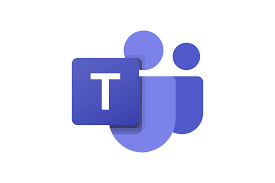CompTIA Network+ (Exam N10-009), ITPRO TV Videos, Labs and Practice Tests
Course Specifications
Course Number: ITP76–023_rev1.0
Course Length: 34 hours 9 minutes
Course Description
This course provides the learner with a comprehensive exploration of networking, encompassing essential fundamental concepts, practical network implementations, and vital operational strategies. Learners will explore how to troubleshoot various network issues effectively. The course will examine critical aspects of network security necessary to protect against a wide range of threats.
Course Content
Overview (3 minutes)
This course provides the learner with a comprehensive exploration of networking, encompassing essential fundamental concepts, practical network implementations, and vital operational strategies. Learners will explore how to troubleshoot various network issues effectively. The course will examine critical aspects of network security necessary to protect against a wide range of threats.
Networking Concepts (33 Episodes: 11 Hours 58 Minutes)
Introduction to Network Communications (22 minutes)
In this episode, the learner will examine the basic components of modern networks. We will explore the purpose and importance of the elements that comprise modern networks.
Examining Network Standardization (19 minutes)
In this episode, the learner will examine various network standardization bodies and the roles of these groups, organizations, and consortiums that contribute to and promote network standards in the US and internationally.
Introduction to TCP_IP and the OSI Model (25 minutes)
In this episode, the learner will examine the TCP/IP and Open Systems Interconnection Models. We will explore the conceptual layers and importance of each layer.
Comparing TCP_IP to the OSI Model (14 minutes)
In this episode, the learner will examine the similarities, differences, and functionalities of the TCP/IP and OSI Model layers.
Encapsulation and Decapsulation (17 minutes)
In this episode, the learner will examine the process of encapsulation and decapsulation. We will explore the significance of the layers of the OSI Model.
Examining Network Topologies and Traffic Flows (26 minutes)
In this episode, the learner will examine the common network topologies associated with attributes. We will explore the benefits and drawbacks of implementing each topology, including traffic flow concepts such as north-to-south and east-to-west traffic flows.
Networking Protocols and Services (23 minutes)
In this episode, the learner will examine common network protocols, services, and ports used in networks today. We will examine the purpose, significance, and role these protocols provide.
Internet Protocol Number and Traffic Types (14 minutes)
In this episode, the learner will examine IP protocol numbers used in IP headers to identify upper-level protocols. We will also explore traffic types such as unicast, broadcast and more.
Examining Public and Private Addressing (22 minutes)
In this episode, the learner will examine private and public IP addressing implementations in networks. We will explore technologies such as Network Address Translation or NAT, the RFC 1918 specification, and more.
Examining IPv4 Address Classes (22 minutes)
In this episode, the learner will examine the IPv4 addressing class structure. We will explore classes ranges, network and hosts capacities, common usage and more.
Examining IPv4 Addressing (20 minutes)
In this episode, the learner will examine IPv4 addressing in TCP/IP networks. We will explore the process and components that make up an IPv4 address.
Introduction to Subnetting (22 minutes)
In this episode, the learner will examine IPv4 subnetting in TCP/IP networks. We will explore the purpose of subnetting, the network and host portions of IPv4 addresses, how networks are divided, and more.
Introduction to VLSM (27 minutes)
In this episode, the learner will examine the role Variable-Length Subnet Mask performs in IP subnetting. We will explore VLSM, how it works, and how it can optimize IP address allocation within IP-based networks.
Introduction to CIDR (22 minutes)
In this episode, the learner will examine Classless Inter-Domain Routing or CIDR. We will explore the benefits that CIDR provides for IPv4 addressing and the Internet.
Implementing IP Addressing (22 minutes)
In this episode, the learner will examine the processing of implementing IP addresses and subnet masks.
Examining Network Switches (22 minutes)
In this episode, the learner will examine the functionality and role network switches perform in modern networking communications. We will explore switch methods, switch types, operational principles and benefits.
Examining Network Routers (21 minutes)
In this episode, the learner will examine the functionality and role network routers perform in modern networking communications. We will explore router functions, operational principles and benefits.
Examining Wireless Appliances (25 minutes)
In this episode, the learner will examine the functionality and role wireless appliances perform in modern networking communications. We will explore various wireless devices, architectures, deployment types, and more.
Examining Firewalls and IPSs (17 minutes)
In this episode, the learner will examine network firewalls, intrusion detection systems (IDS), and intrusion prevention systems (IPS). We will explore various types of firewalls and functionalities.
Examining Load Balancers and Proxies (18 minutes)
In this episode, the learner will examine load balancers and proxies. We will explore various types, services, and functionalities provided by these network components.
Examining Network Storage (18 minutes)
In this episode, the learner will examine various network storage technologies such as Storage Area Networks (SANs) and Network-attached Storage (NAS). We will explore technologies like Fibre Channel connection types and file systems such as SMB and NFS.
Examining VPNs and QoS (22 minutes)
In this episode, the learner will examine Quality of Service technologies. We will explore concepts such as traffic prioritization, classification, congestion management, 802.1Q, and more.
Examining the 802.11 Standard (26 minutes)
In this episode, the learner will examine the IEEE's 802.11 family of wireless LAN (WLAN) standard. We will examine the development of the standard, including the frequencies, channels, speeds of these standards, and more.
Examining the 802.3 Standard (26 minutes)
In this episode, the learner will examine the IEEE's local area network or LAN standards known as 802.3. We will explore the characteristics of these standards, such as the BASE naming convention and Ethernet names.
Examining Transceivers and Connector Types (28 minutes)
In this episode, the learner will examine various transceiver and connection considerations. We will explore standards, transceiver form factors such as SFP and QSFP, TIA Category standards and more.
Examining Wireless Communications (27 minutes)
In this episode, the learner will learn various wireless communication technologies and standards. We will explore cellular, satellite, Bluetooth, and infrared.
Examining Cloud Concepts (27 minutes)
In this episode, the learner will examine the concepts of cloud technologies. We will explore cloud deployment models, service types such as SaaS, PaaS, IaaS and more.
Examining Cloud Components (20 minutes)
In this episode, the learner will examine various cloud components such as Virtual Private Clouds (VPCs), Network Security Groups (NSGs), direct and VPN connections, cloud gateways, and more.
Examining SDN and SD-WAN (17 minutes)
In this episode, the learner will examine Software-Defined Networks, or SDNs, and Software-Defined Wide Area Networks, or SD-WAN. We will explore the benefits and components of these evolving network technologies.
Examining VXLAN (12 minutes)
In this episode, the learner will examine VXLAN. We will explore VXLAN technologies, and a comparison to traditional VLANs.
Examining Zero Trust Architecture (20 minutes)
In this episode, the learner will examine Zero Trust Architecture or ZTA. We will explore the fundamental components and principles of Zero Trust Architecture.
Examining Infrastructure as Code (16 minutes)
In this episode, the learner will examine Infrastructure as Code or IaC. We will explore some of the various benefits of IaC, such as in DevOps, cloud environments, and more.
Examining IPv6 Addresses (23 minutes)
In this episode, the learner will examine IPv6 addresses, including their format and structure. We will explore the benefits and characteristics of IPv6.
Network Implementation (23 Episodes: 4 Hours 56 Minutes)
Static Routing (11 minutes)
In this episode, the viewer will identify common networking devices that help to move traffic across networks as well as the endpoint devices or networked devices that connect to modern networks.
OSPF (14 minutes)
In this episode, you will learn about the dynamic, link-state routing protocol named OSPF. Here you will learn the concepts behind this protocol and you will even see its configuration on Cisco routers.
EIGRP (11 minutes)
In this episode, you will learn about the Enhanced Interior Gateway Protocol (EIGRP) developed by Cisco Systems. You will learn the basics theory of this protocol, and you will also learn about the basic configurations that are required for its operation.
BGP (9 minutes)
In this episode, you will learn about the exterior gateway protocol called Border Gateway Protocol (BGP). You will learn key theory about this important protocol, and you will even learn about basic configurations that make this protocol function.
Route Selection (8 minutes)
In this episode, you will learn about how routers choose a best path to a destination when they have multiple sources of information for the routing decision. This includes a discussion of administrative distance, prefix length, and routing metrics.
Address Translation (17 minutes)
In this episode, you will learn about address translation in modern networks. This includes a discussion of NAT and PAT. This episode also walks you through a sample configuration on a Cisco router.
First Hop Redundancy Protocols (10 minutes)
In this episode, you will learn about the need for First Hop Redundancy Protocols (FHRPs)and their function. You will also learn about three of the more popular FHRPs in use today.
Subinterfaces (7 minutes)
In this episode, you will learn about the function and configuration of subinterfaces on network devices.
VLANs (14 minutes)
In this episode, you will learn about virtual local area networks and how they are used and configured in modern networks.
Interface Configuration (10 minutes)
In this episode, you will learn about configuring switch interfaces in a typical modern network. These technologies you often configure include the native VLAN, the voice VLAN, 802.1Q tagging, link aggregation, speed, and duplex.
Spanning Tree Protocol (11 minutes)
In this episode, you will learn about the need for spanning tree protocol in typical switched networks of today. You will learn about the basic functionality of this protocol and its different versions.
MTU (11 minutes)
In this episode, you will learn about the Maximum Transmission Unit (MTU) concept in modern networks. This includes a discussion of jumbo frames in networking today.
Frequencies and Channels (17 minutes)
In this episode, you will learn about the wireless frequencies used in networking today. You will also learn about the channels used in wireless technologies. This includes a discussion of channel width, non-overlapping channels, and 802.11h.
SSIDs (9 minutes)
In this episode, you will learn about the concept of basic service set identifiers, service set identifiers, and extended service set identifiers in wireless networks.
Network Types (10 minutes)
In this episode, you will learn about the different network types that are found with wireless technologies.
Encryption (19 minutes)
In this episode, you will learn about the latest encryption methods used in wireless networks today. These are Wi-Fi Protected Access 2 (WPA2) and Wi-Fi Protected Access 3 (WPA3).
Authentication (14 minutes)
In this episode, you will learn about the authentication options commonly used in wireless networks today.
Guest Networks (13 minutes)
In this episode, you will learn about the use of guest networks in modern wireless environments. This includes the use of captive portals.
Antennas (13 minutes)
In this episode, you will learn about just some of the wireless antennas used in modern wireless networks today. These include omnidirectional versus directional antennas.
Access Points (12 minutes)
In this episode, you will learn about wireless access points. You will learn about the key differences between autonomous access points and lightweight access points.
Installation Implications (19 minutes)
In this episode, you will learn about various implications when it comes to physical installations. These include installation locations, rack sizes, port-side exhaust/intakes, cabling, and lockable devices.
Power (12 minutes)
In this episode, you will learn about power considerations for physical installations including, Uninterruptible Power Supplies (UPS), power distribution units (PDUs), power loads, and voltages.
Environmental Factors (14 minutes)
In this episode, you will learn about key environmental considerations you should have when it comes to physical IT installations. These considerations include humidity, fire suppression, and temperature.
Network Operations (20 Episodes: 4 Hours 40 Minutes)
Common Documentation (15 minutes)
In this episode, you will learn the common types of documentation used in networks today. Examples we will cover include physical versus logical diagrams, network diagrams, asset inventories, and more.
Life-cycle Management (17 minutes)
In this episode, you will learn about typical life-cycle management processes and considerations that take place in modern networks.
Configuration/Change Management (11 minutes)
In this episode, you will learn about the important topics of change management and configuration management used in organizations today. You will learn to define these areas as well as discuss typical components and processes used in their function.
SNMP (14 minutes)
In this episode, you will learn about the Simple Network Management Protocol (SNMP) used in many networks today. This discussion includes information about the functions and operation of this protocol as well as the versions found in use today.
Flow Data and Packet Captures (15 minutes)
In this episode, you will learn the importance of flow data and packet captures in modern networking environments. This will include examples like NetFlow and Wireshark.
Baseline Metrics (15 minutes)
In this episode, you will learn about the importance of metrics for monitoring and maintaining your networking environment. You will also learn about the importance of baseline metrics and how they can be used in your organization.
Log Aggregation (21 minutes)
In this episode, you will learn about log aggregation technologies as they are used in modern networking. This includes information about syslog collectors and Security Information and Event Management (SIEM) systems.
API Integration (12 minutes)
In this episode, you will learn about the integration of Application Programming Interfaces (APIs) for the management of modern network devices.
Port Mirroring (8 minutes)
In this episode, you will learn about why there is a need for port mirroring technology. You also learn about how port mirroring operates.
Network Monitoring Solutions (10 minutes)
In this episode, you will learn about the various categories of network monitoring solutions. These include traffic analysis, performance monitoring, availability monitoring, and configuration monitoring to name a few. This episode also discusses various approaches to network discovery.
DR Metrics (10 minutes)
In this episode, you will learn about common metrics that are used in the area of disaster recovery. These metrics can help organizations ensure that their DR strategy meets their requirements and goals for DR.
DR Sites (9 minutes)
In this episode, you will learn about the different types of sites that are commonly used in disaster recovery (DR) designs today.
HA Approaches-DR Testing (16 minutes)
In this episode, you will learn about some of the common high availability approaches. Specifically, you will learn the difference between active-active and active-passive designs. You will also learn about some common approaches to testing DR.
DHCP (19 minutes)
In this episode, you will learn about the role and functions of Dynamic Host Configuration Protocol (DHCP) in modern networks. You will also learn about stateless address autoconfiguration (SLAAC) capabilities in IPv6 networks.
DNS (21 minutes)
In this episode, you will learn about the network service called DNS. This includes information on Domain Name Security Extensions, DNS over HTTPS, DNS over TLS, and DNS records and zone types.
Time Protocols (11 minutes)
In this episode, you will learn about the need for time protocols in modern networks. Specifically, you will learn about the Network Time Protocol (NTP), the Precision Time Protocol (PTP), and the Network Time Security (NTS) protocol.
VPNs (16 minutes)
In this episode, you will learn about the client to site and the site to site VPN. You will also learn about clienteles VPNs and split tunneling.
Connection Methods (13 minutes)
In this episode, you will learn about various connection methods for access to remote resources. These connection methods include console access, GUIs, APIs, and SSH.
Jump Boxes (12 minutes)
In this episode, you will learn about jump boxes and why they might be needed in a modern design. You will also learn about the common features of these network components.
In-Band vs Out-of-Band Management (9 minutes)
In this episode, you will learn about in-band versus out-of-band management as it is used in modern networking.
Network Security Fundamentals (23 Episodes: 6 Hours 58 Minutes)
Data Security Concepts (18 minutes)
Knowing the 3 states of data and how to secure it is foundational for any cybersecurity professional. In this episode, we will explore those 3 data states as well as look at how we can secure data in each state.
Examining Digital Certificates (23 minutes)
In this episode, the learner will examine digital certificates, digital signatures and certificate formats. We will explore the file extensions and where these certificates are utilized.
Examining Public Key Infrastructure (22 minutes)
In this episode, the learner will examine public key infrastructure. We will explore the common components such as certificate authorities, public keys, Certificate Signing Requests, Certificate Revocation Lists and more.
Examining Identity and Access Management (10 minutes)
In this episode, the learner will examine the components of identity and access management or IAM solutions. We will explore the role this technology play in organizational security.
Examining Authentication Factors (15 minutes)
In this episode, the learner will examine authentication, authentication factors and multifactor authentication or MFA.
Examining Single Sign On (18 minutes)
In this episode, the learner will examine single sign-on or SSO technologies and the importance and components of security. We will explore identity federation, identity providers or IdPs, SAML, OAuth, and OpenID concepts.
Authentication with LDAP (11 minutes)
One common way to perform authentication is by employing the Lightweight Directory Access Protocol or LDAP. In this episode, we'll discuss the basics of LDAP as well as the 6 steps in LDAP authentication.
Examining AAA (14 minutes)
In this episode, the learner will examine a technology used to centrally manage authentication, authorization and accounting called the Remote Authentication Dial-in User Service or RADIUS.
TACACS (6 minutes)
Network device administration can be a difficult task which can create security issues. In this episode, we will look at the TACACS+ system for encrypted, centralized Authentication, Authorization, and Accounting(AAA).
Time-Based Auth and Geofencing (11 minutes)
One way we can better secure our networks is to limit the times and places that they can be accessed from. In this episode, we will investigate Time-based authentication and Geofencing, which are security defenses that address both of those issues respectively.
The Principle of Least Privilege (21 minutes)
Over-privileging accounts is a common cause of system compromise and privilege escalation. In this episode, we will explore the Principle of Least Privilege, which is a simple guideline to help prevent the over-privileging of resources.
Examining Authorization and Access Control Models (23 minutes)
In this episode, the learner will examine the process of authorization and access control models such as Discretionary Access Control, Role-based Access Control and more.
Examining Physical Security (20 minutes)
In this episode, the learner will examine the importance of physical security to protect assets. We will explore common methods used when implementing physical security infrastructure.
Examining Deception Technologies (11 minutes)
In this episode, the learner will examine deceptive technologies used to lure potential attackers, such as honeypots and honeynets.
Risks, Vulnerabilities, and Threats (20 minutes)
What is the difference between risks, vulnerabilities, and threats and why are the distinctions important? In this episode we aim to answer those questions and how they enable us to better secure our networks.
Examining the Principles of Security (18 minutes)
In this episode, the learner will examine the security triangle and the goals of security. We will also explore methods to accomplish the principles of security.
Regulatory Compliance and Audits (19 minutes)
Familiarity with the various regulator, compliance, and security standards are necessary skills for anyone entrusted with the security of a computer network. In this episode, we'll look at a couple of examples such as PCI-DSS and GDPR.
IoT and SCADA (14 minutes)
In this episode, you will learn about security implications involved with IoT and SCADA architectural models.
Network Segmentation (12 minutes)
In this episode, we'll discuss how to better secure large, flat networks by introducing segmentation which helps to limit attack spread, protect sensitive data, and reduce vulnerability exploitation.
Network Based Threats (23 minutes)
In this episode, we will dive into the common network-based threats that affect wired, wireless, and bluetooth systems.
Indicators of Network Attacks (26 minutes)
In this episode, we will examine the common indicators of a network attack. These attack indicators are varied and could be aimed at network services such as DNS, or could be attempting to deny access to network services by way of a DDoS attack. Other network attack indicators include wireless attacks, Man-In-The-Middle or "On-Path" attacks, and credential replay attacks.
Malware and Social Engineerings (26 minutes)
Malware and Social Engineering attacks make up a large portion of today's security incidents, so it is vital for us to become knowledgeable about them. In this episode, we'll explore different Social Engineering attacks as well as how Malware can be leveraged to exploit known vulnerabilities.
Network Security Defenses (24 minutes)
In this episode, we will explore a variety of tools and tactics such as device hardening, Network Access Control (NAC), and Filtering, that can be leveraged to better secure our networks.
Network Troubleshooting (17 Episodes: 5 Hours 32 Minutes)
Implementing a Troubleshooting Methodology (18 minutes)
In this episode, the learner will examine the significance of implementing a step-by-step, repeatable approach to network troubleshooting. We will explore the concepts and introduce a structured network troubleshooting methodology.
Identifying the Problem in Troubleshooting (15 minutes)
In this episode, the learner will examine the initial step of the network troubleshooting methodology, identifying the problem. We will explore a variety of techniques that can be implemented to help the learner identify the networking problem quickly.
Establishing and Testing Theories in Troubleshooting (17 minutes)
In this episode, the learner will explore establishing and testing theories, when applying a troubleshooting methodology. We will explore some techniques such as questioning the obvious, or simple fixes first and considering multiple theories, such as using the OSI model to approach the theory creation process.
Establishing an Action Plan in Troubleshooting (17 minutes)
In this episode, the learner will examine the process of the importance of developing an action plan in troubleshooting. We will explore techniques such as carefully considering the impact and changes that can have on the network and users.
Implementing a Solution in Troubleshooting (14 minutes)
In this episode, the learner will examine the process of solution implementation and escalation in troubleshooting. We will explore the attributes, characteristics, and examples of implementing or escalating troubleshooting issues.
Verification and Documentation in Troubleshooting (19 minutes)
In this episode, the learner will examine the verification and documentation steps when applying a troubleshooting methodology. We will explore the techniques and examples of these steps in networks.
Examining Network Cabling Issues (17 minutes)
In this episode, the learner will examine common cabling issues facing today's networks. We will explore interference and mismatch issues and copper and fiber optic-based cabling issues.
Examining Physical Interface Issues (18 minutes)
In this episode, the learner will examine various interface metrics on network devices that can be used to identify, diagnose, and resolve common hardware issues. We will explore CRCs, runts, giants, drops, port status, and more.
Examining Switching and Routing Issue (20 minutes)
In this episode, the learner will examine switching and routing issues that can affect network traffic. We will examine network loops, port roles, root bridge election, route selection issues and more.
Examining IP Addressing Issues (22 minutes)
In this episode, the learner will examine common IP addressing issues in today's TCP/IP networks. We will explore address pool exhaustion, incorrect IP addresses, subnet masks, gateway settings, and more.
Examining Network Traffic Issues (24 minutes)
In this episode, the learner will examine common issues with network traffic that can hinder performance. We will explore various conditions such as congestion, jitter, packet loss, bandwidth issues, and more.
Examining Wireless Network Issues (20 minutes)
In this episode, the learner will examine common issues facing wireless networks. We will examine interference, signal degradation and loss, client disassociation, roaming issues, and more.
Examining Network Commands in Windows (25 minutes)
In this episode, the learner will examine common network troubleshooting commands. We will explore command such as ping, ipconfig, nslookup, tracert, netstat and more.
Examining Network Commands in Linux (25 minutes)
In this episode, the learner will examine common network troubleshooting commands used in Linux. We will explore command such as ping, ip, dig, mtr, nmap, tcpdump and more.
Examining Hardware-based Tools (20 minutes)
In this episode, the learner will examine common hardware-based network troubleshooting tools. We will explore tools such as tone generators, cable testers, taps, and more.
Examining Software-Based Tools (9 minutes))
In this episode, the learner will examine various software-based tools used in network troubleshooting. We will explore protocol analyzers, packet capture utilities, Wi-Fi Analyzers, and more.
Examining Basic Network Device Commands (16 minutes)
In this episode the viewer will examine basic commands use to configure network devices, through a command line interface or CLI.


.jpg)
.jpg)
.jpg)
.jpg)


.png)






